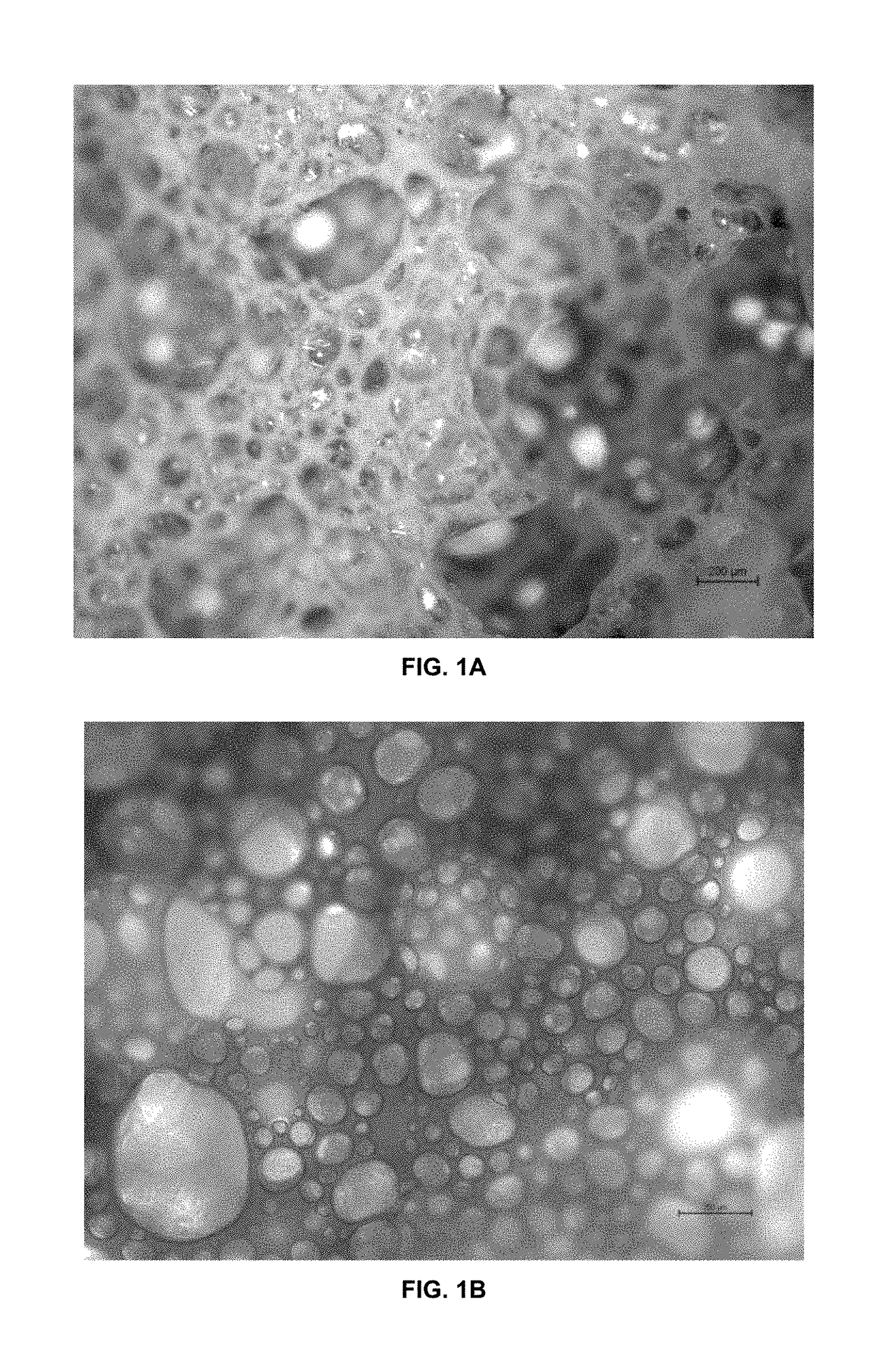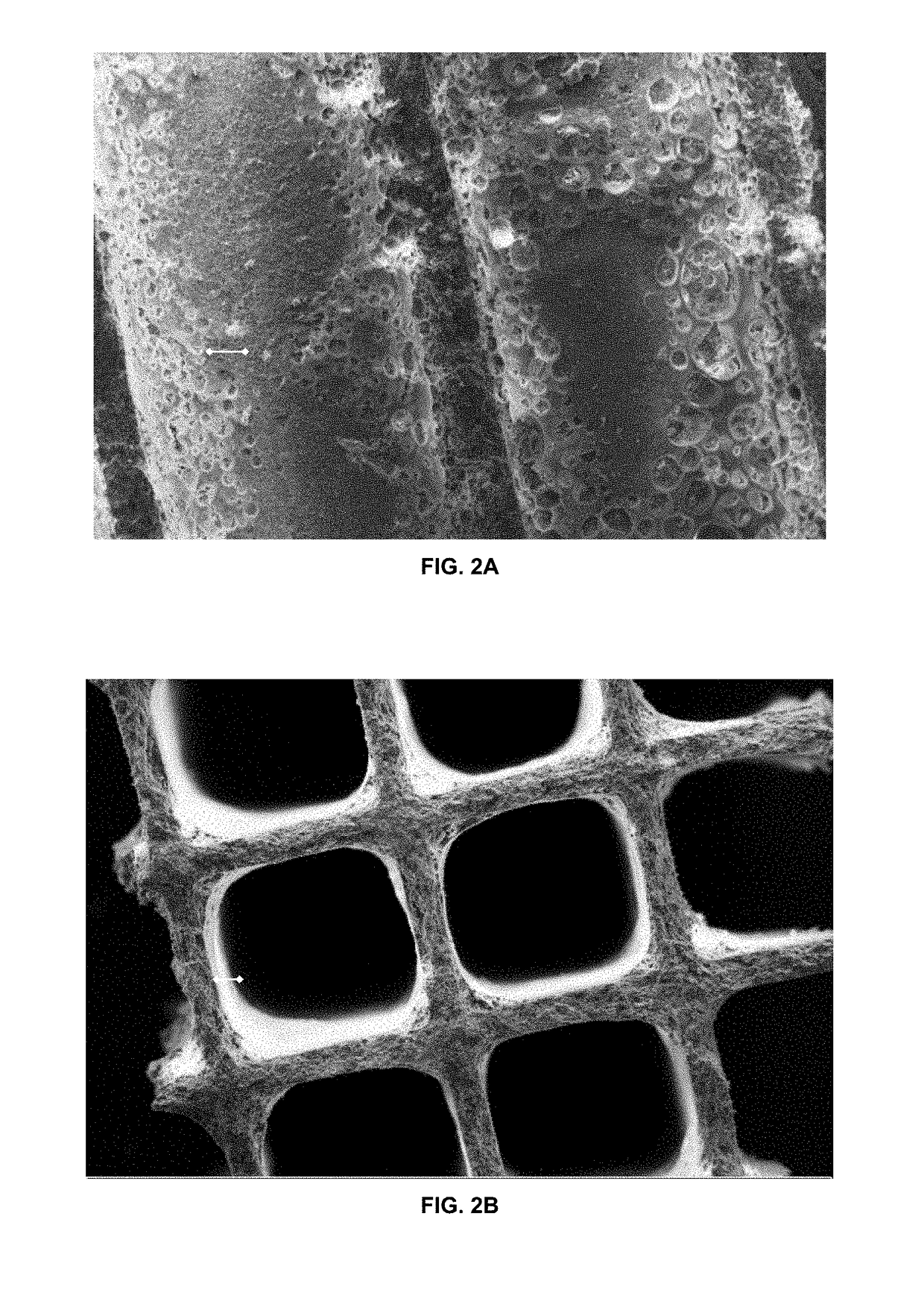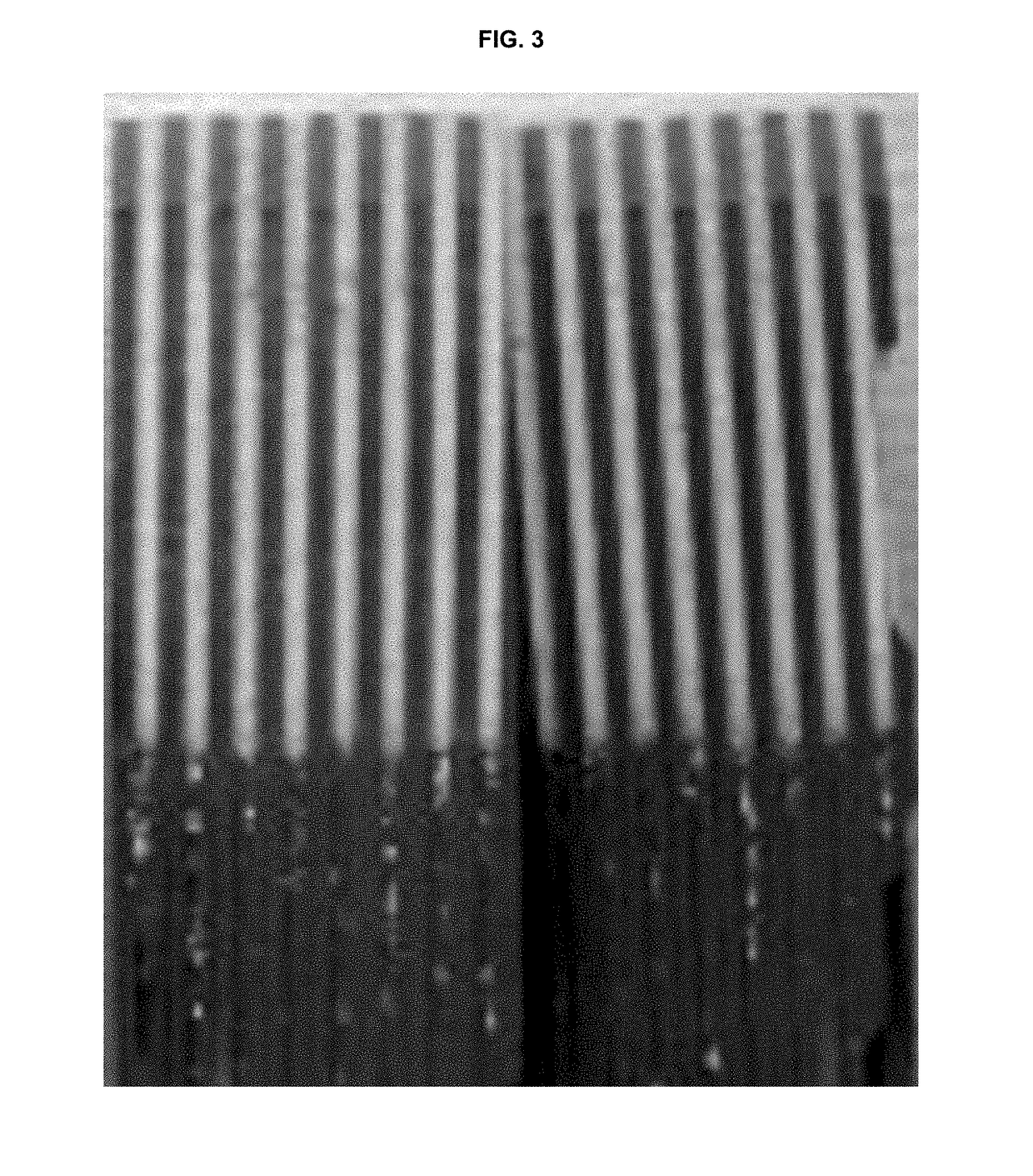Method of coating a substrate with a particle stabilized foam
a technology of particle stabilized foam and substrate, which is applied in the direction of physical/chemical process catalysts, organic compound/hydride/coordination complex catalysts, separation processes, etc., can solve the problems of not divulging or teaching any coating application, and achieve excellent control
- Summary
- Abstract
- Description
- Claims
- Application Information
AI Technical Summary
Benefits of technology
Problems solved by technology
Method used
Image
Examples
example 1
[0238]A gamma-alumina suspension was prepared by mixing the appropriate amount of powder with water. The pH was adjusted to 5.5 with HNO3 and the suspension stirred to homogenize. The suspension was milled to a d50 of <6 microns.
[0239]To a portion of this suspension, valeric acid (1.6% of the mass of Alumina) was added and the pH adjusted to 4.8, with NH3. Air was introduced into the suspension using a Kenwood Chef Classic™ food mixer with a whisk attachment, stirring at maximum speed for 10 minutes to produce a foam with 5.9 times the volume of the starting suspension.
[0240]The foam was aged for three days during which no liquid drainage, drying or coarsening of the bubble structure was observed.
example 2
[0241]Boehmite powder (an alumina supplied by Sasol) was added to demineralised water. This suspension was stirred for three hours. A Cu exchanged small pore zeolite with the CHA structure and SAR 25 (3.0 wt. % Cu) was added slowly (Zeolite:Boehmite ratio 9:1). The total solids content of this suspension was 31 wt %.
[0242]To a portion of this suspension, valeric acid (of varying quantities described in Table 1) was added and the pH adjusted, when needed, to 4.8 with NH3 Air was introduced into each portion of the suspension using a Kenwood Chef Classic™ food mixer with a whisk attachment, stirring at maximum speed for 10 minutes to produce a foam.
TABLE 1Foam Samples Summary of EXAMPLE 2SampleValeric AcidInitial VolumeFoam VolumeIDSolids wt. %mmol / g solids(ml)(ml)A19.970.085150300B19.970.1801501200C18.840.173150200D31.000.1091501200E29.950.0561501100F31.390.082100700G30.670.2101501200H19.820.1221501100I20.150.2741501250J20.340.2881501200
[0243]FIG. 1a shows fresh foam optical microsco...
example 3
SCR Foam Coating Test
[0244]A suspension was prepared by diluting and then stirring a suspension of similar composition to the one in EXAMPLE 2 until it became homogeneous.
[0245]To a portion of this suspension, valeric acid (2.1% of the mass of solid component) was added and the pH adjusted to 4.8 with of tetra-n-propyl-ammonium hydroxide. Air was introduced into the suspension using a Kenwood Chef Classic™ food mixer with a whisk attachment, stirring at maximum speed for 10 minutes to produce a foam.
[0246]The foam was introduced to the outlet end of a 1 inch core taken from a cordierite flow-through substrate using a vacuum applied from the inlet end. The core was dried and then calcined at 500° C. for 2 h.
[0247]As shown in FIG. 2, scanning electron microscopy of the coated core indicates that the solid foam coating forms a uniform layer on the cell walls. Open bubbles are visible at the surface of the solid foam layer. The images were taken in the following conditions: 2a) accelera...
PUM
| Property | Measurement | Unit |
|---|---|---|
| median particle size | aaaaa | aaaaa |
| diameter | aaaaa | aaaaa |
| median pore diameter | aaaaa | aaaaa |
Abstract
Description
Claims
Application Information
 Login to View More
Login to View More - R&D
- Intellectual Property
- Life Sciences
- Materials
- Tech Scout
- Unparalleled Data Quality
- Higher Quality Content
- 60% Fewer Hallucinations
Browse by: Latest US Patents, China's latest patents, Technical Efficacy Thesaurus, Application Domain, Technology Topic, Popular Technical Reports.
© 2025 PatSnap. All rights reserved.Legal|Privacy policy|Modern Slavery Act Transparency Statement|Sitemap|About US| Contact US: help@patsnap.com



